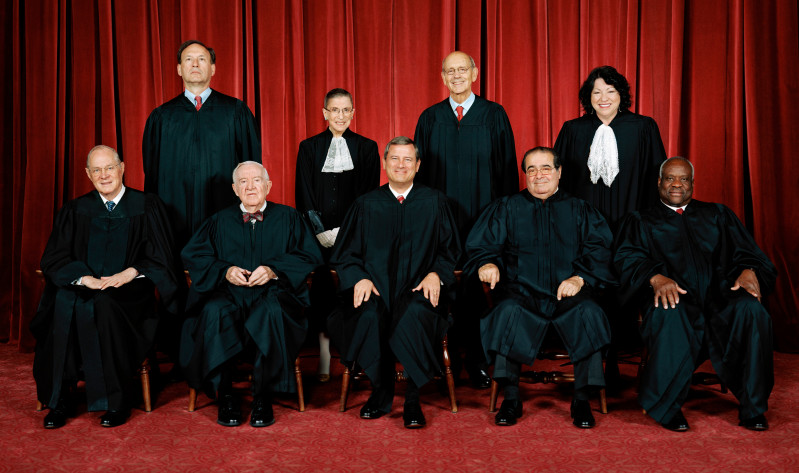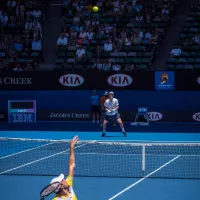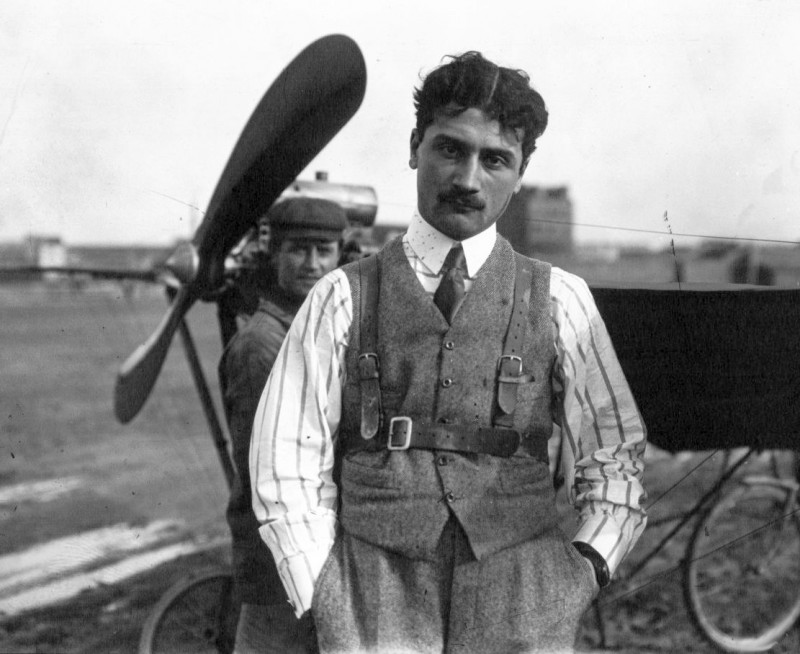Eugène Adrien Roland Georges Garros was a pioneering French aviator and fighter pilot. He achieved early aviation milestones, including the first airplane crossing of the Mediterranean Sea. During World War I, he served as a fighter pilot in the French army but was shot down and killed in 1918. Posthumously, he is most remembered for having the Roland Garros tennis stadium named in his honor in 1928; the stadium is where the French Open is held, which also bears the name, Roland Garros.
1909: Grande Semaine d'Aviation de la Champagne
During his summer holiday in 1909, Garros saw the Grande Semaine d'Aviation de la Champagne which ran from August 22 to 29. After this, he knew he had to be an aviator.
1909: Aviation Career Begins
In 1909, Garros started his aviation career flying a Demoiselle monoplane.
1909: Garros begins aviation career
In 1909, Roland Garros began his career in aviation.
July 1910: Garros gains Ae.C.F. licence no. 147
In July 1910, Garros gained Ae.C.F. licence no. 147.
September 1911: Altitude Record Set
In September 1911, Garros set an altitude record of 3,950 m (12,960 ft).
1911: Flying Bleriot XI Monoplanes
In 1911, Garros graduated to flying Blériot XI monoplanes and entered air races.
September 1912: Garros regains height record
In September 1912, Garros regained the height record by flying to 5,610 m (18,410 ft).
1913: First Airplane Crossing of the Mediterranean Sea
In 1913, Garros accomplished the first-ever airplane crossing of the Mediterranean Sea.
1913: First Non-Stop Flight Across the Mediterranean Sea
In 1913, Garros gained fame for making the first non-stop flight across the Mediterranean Sea in a Morane-Saulnier G, commencing the flight on September 23.
April 1914: Saulnier patents synchroniser
By April 14 1914, Raymond Saulnier had taken out a patent for a workable synchroniser for machine guns on planes.
August 1914: Reports of Air Battle Involvement
In August 1914, reports claimed Garros was involved in the "first air battle in world history", a story that was quickly contradicted.
December 1914: Discussion at Morane-Saulnier Works
In December 1914, Garros visited the Morane-Saulnier works to discuss the problem of mounting a forward-firing machine gun on combat aircraft.
April 1915: First Shooting-Down of an Aircraft
On April 1, 1915, Garros achieved the first shooting-down of an aircraft by a fighter firing through a tractor propeller, with two more victories on April 15 and 18.
April 1915: Capture by German Forces
On April 18, 1915, Garros's plane experienced engine trouble and he was captured by German infantrymen. The intact gun and propeller were rushed to Anthony Fokker.
June 1915: First aerial victory against a Zeppelin
Later sources indicated the first aerial victory against a Zeppelin occurred in June 1915 and earlier reports, including that of Garros, were discounted.
February 1918: Escape from German POW camp
On February 14, 1918, Garros escaped from a German POW camp with lieutenant Anselme Marchal.
October 1918: Death of Roland Garros
In October 1918, Roland Garros was shot down and died.
October 1918: Two Victories Claimed
On October 2, 1918, Garros claimed two victories, one of which was confirmed.
1928: Roland Garros tennis stadium named
In 1928, the Roland Garros tennis stadium was named in his memory, and the French Open takes his name.
1936: Hanoi stadium named after Roland Garros
According to Vũ Trọng Phụng's urban novel, Dumb Luck (1936), during colonial times the Hanoi government named the city's main tennis stadium after Roland Garros.
Mentioned in this timeline
Ettore Bugatti was a French car manufacturer founded in in...

Champagne is a sparkling wine exclusively produced in the Champagne...

September is the ninth month of the year in the...

Black is an achromatic color representing the absence of light...

Tennis is a racket sport played between two opponents singles...
Trending

3 days ago James Gunn Plans Superman Sequel Shooting Soon; Teases 'Peacemaker' Role in DCU.
3 days ago Motorcycle crash in Beloit on Cranston Road: Police investigate single-vehicle incident.

3 days ago Zion: Influencers' Storm, Hidden Trail & East Mesa Hike, Views and Fewer Crowds
3 days ago Qatar Airways and Accenture partner for AI-driven aviation excellence, creating 'AI Skyways'.

3 days ago Ketel Marte's Absence and Day Off Requests Cause Frustration Among Diamondbacks Teammates

3 days ago Jamie Lee Curtis Celebrates 'Freakier Friday' with Fan Event and Lookalike Screening
Popular

Gavin Newsom is an American politician and businessman currently serving...
The Kennedy Center Honors are annual awards presented since recognizing...

Adam Schiff is an American politician and lawyer currently serving...

Jupiter is the fifth and largest planet from the Sun...

Candace Owens is an American political commentator and author known...

Ken Paxton is an American politician and lawyer serving as...
